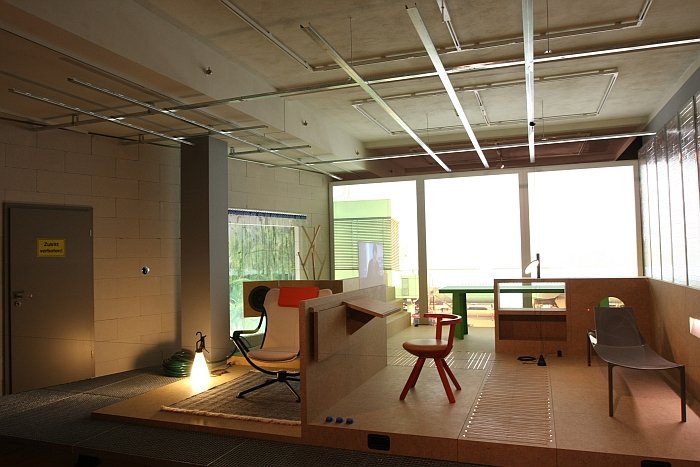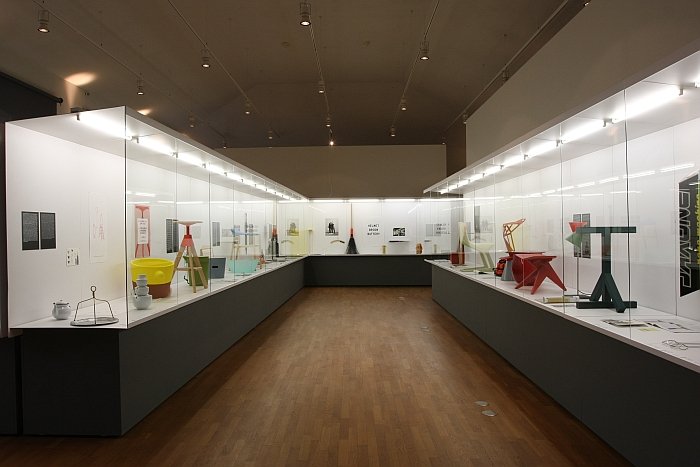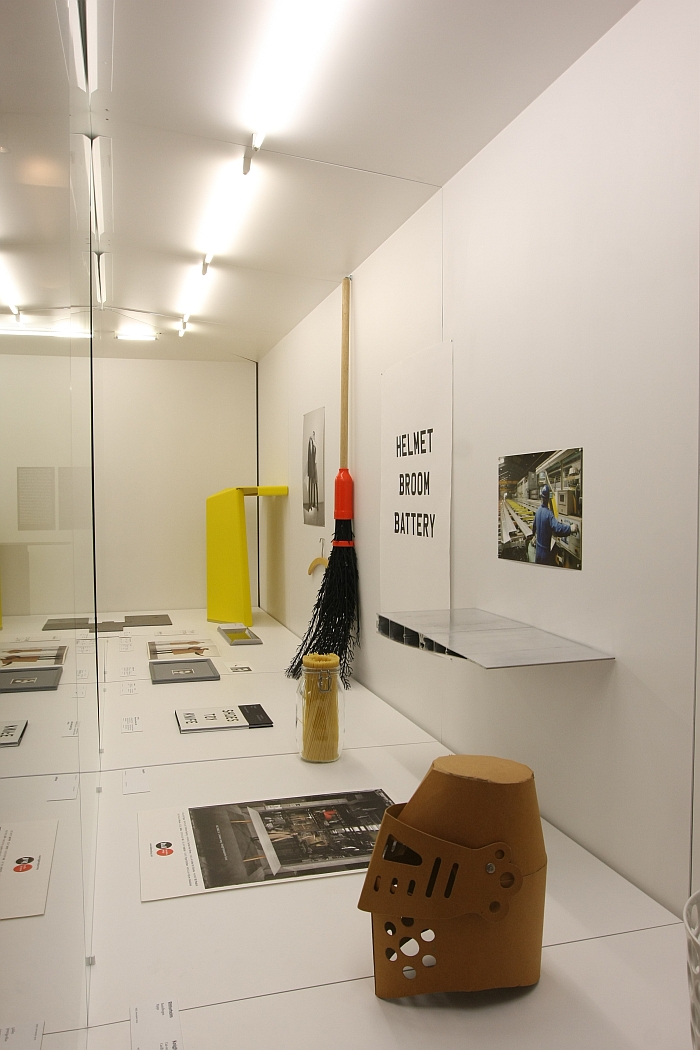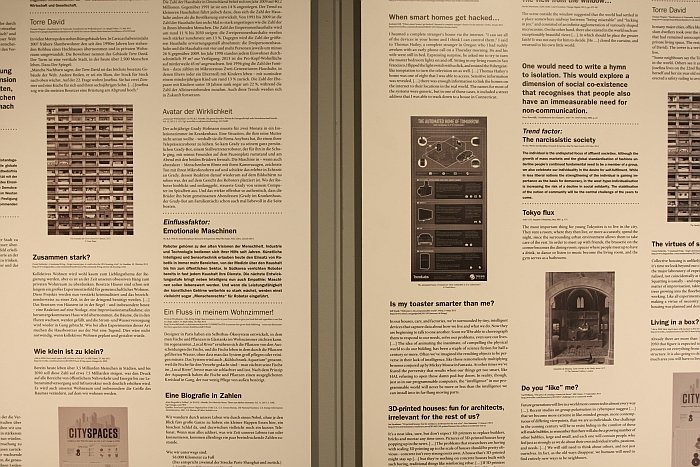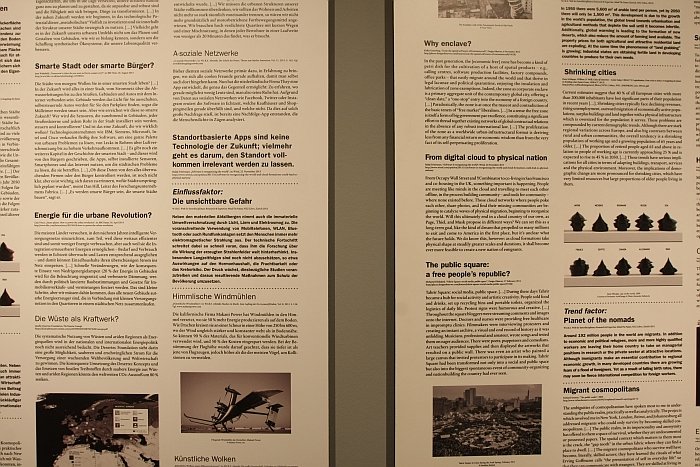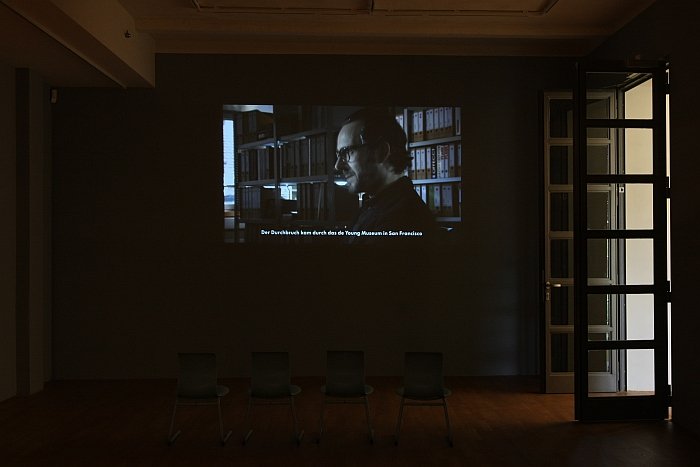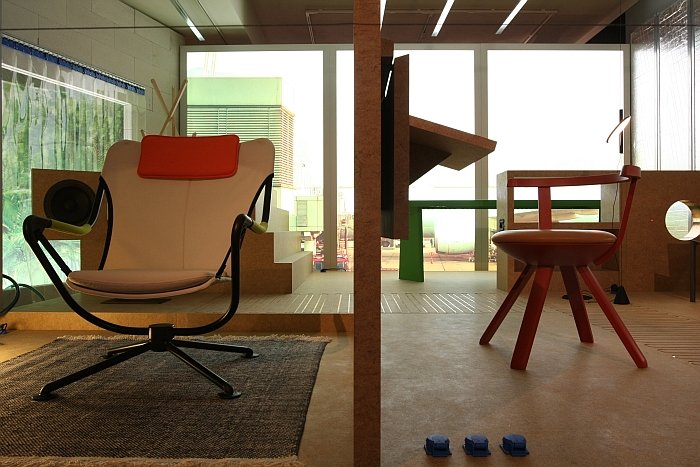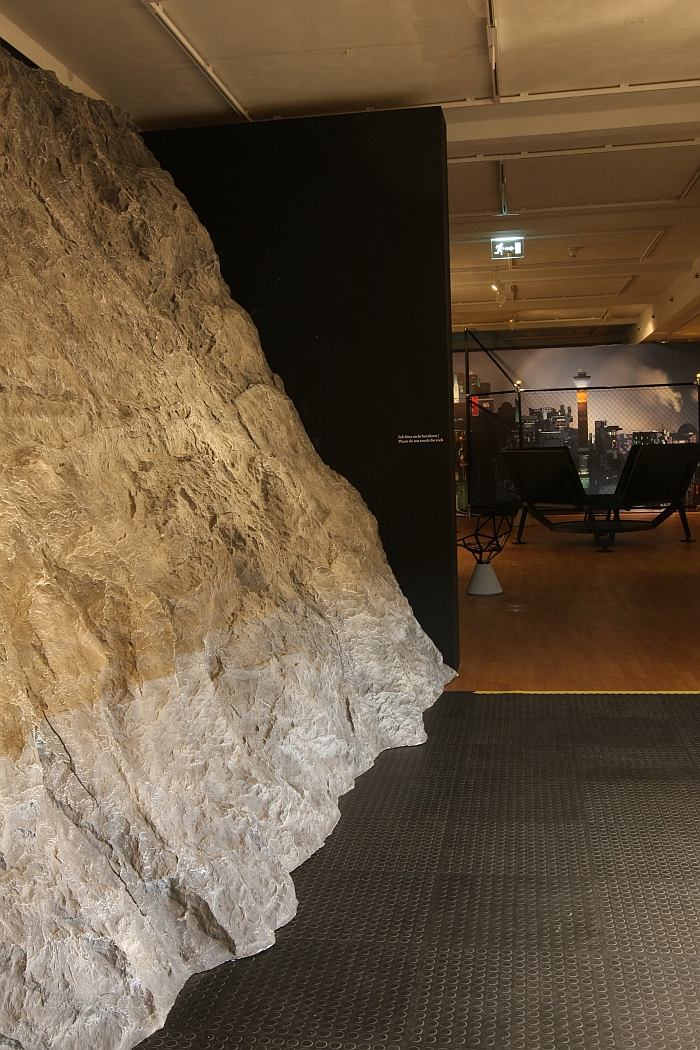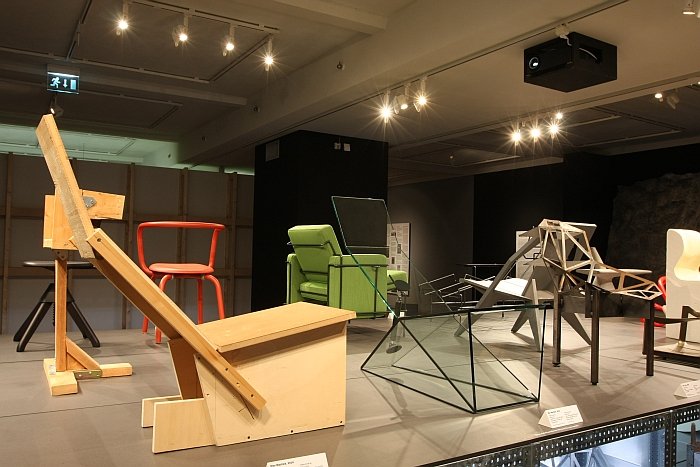On Leipzig's Augustusplatz one can currently enjoy the wonders of the Leipzig Märchenland, the Leipzig Fairytale World.
Alternatively, some 500m east of Augustusplatz in the Art Déco splendour of the Grassi Museum for Applied Arts one can enjoy the wonders of the equally narrative, if thankfully less preachy and moralising, Konstantin Grcic Märchenland.
Or Konstantin Grcic - Panorama, to give its formal name.
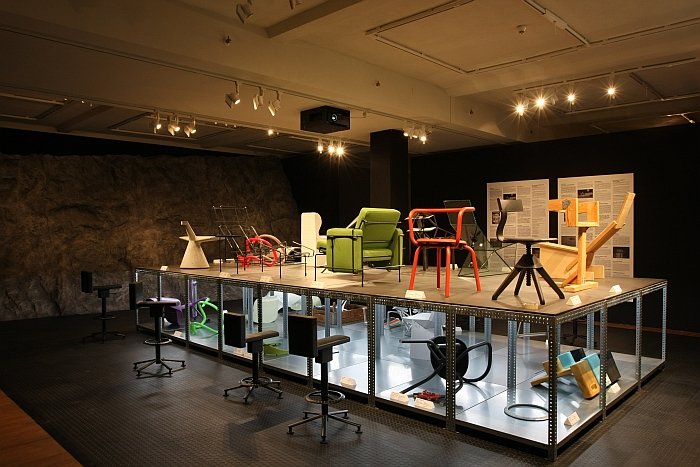
Originally exhibited in 2014 at the Vitra Design Museum, Konstantin Grcic - Panorama presents a series of scenographic installations in which the German designer Konstantin Grcic invites discussion, debate and consideration on aspects of our (near) future society.
Which should not be misunderstood as the exhibition being a look into the future "No one can predict the future, and I certainly don't want the role of prophet, soothsayer or one who defines the future", says Grcic, "There is currently so much happening in the world that is already part of a future, but we can't always comprehend and grasp it because of a lack of information or experience in dealing with the information, and so here, with the texts and soundbites we have gathered, hopefully the visitors will begin to pose their own questions about what is on display and feel encouraged to look further, be open to new ideas and to think anew."
To this end Panorama is divided into fours sections split across two connected but essentially separate exhibitions.
The first three sections exploring, respectively, domestic arrangements in the Life Space, the design process in the Work Space and urban planning in its broadest sense under the title Public Space, feature a combination of objects, prototypes and experiments by Konstantin Grcic together with short texts and articles related to the subjects and forms the essence of Panorama with the visitor being challenged to pose questions as they walk through, considering what they see and to form their own opinion on the opinions expressed and objects presented.
The final section of the exhibition, Object Space, is devoted to a deeper exploration of Konstantin Grcic's work and motivations, features an array of objects collected by Grcic over the years, and which have in some way have inspired or educated him, positioned next to his own design work, and as a presentation is separate physically as conceptually from the first three sections.
So all just as it was at the Vitra Design Museum.
And so dear reader we refer you to our original post from Weil am Rhein, because it is, essentially, the text we would have written today. And which we, effectively, will write today if we quote from it to the extent we are currently planning.
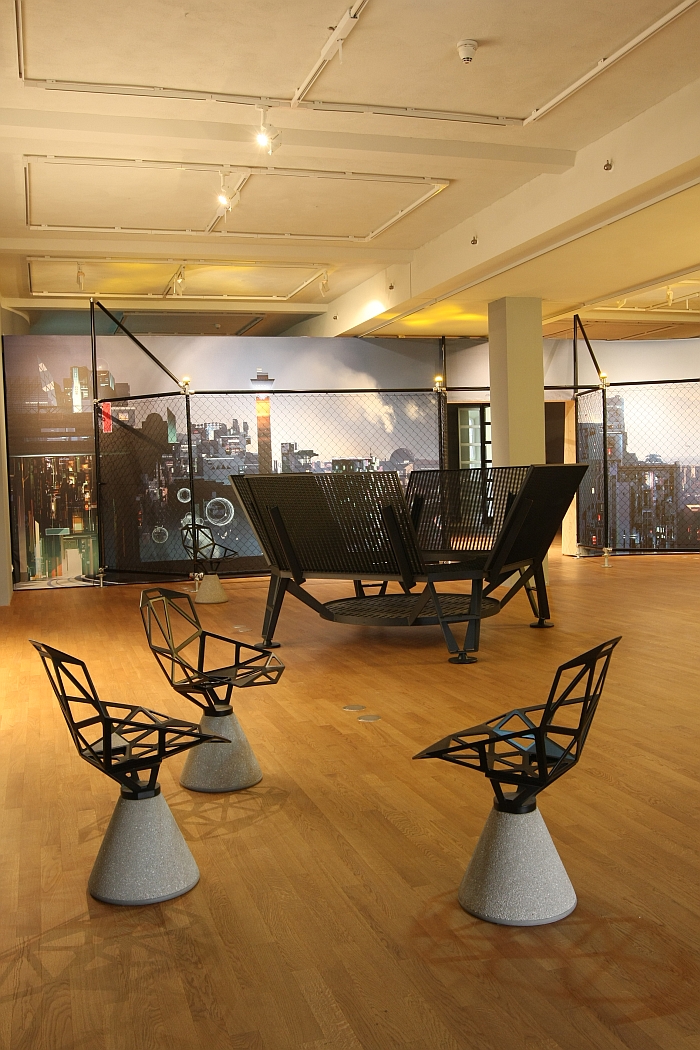
Although the same exhibition as shown at Weil am Rhein, the Grassi Leipzig Panorama isn't the same exhibition, for just as a band can perform the same set at two venues and produce two separate concerts, or a play can be staged identically at two locations yet produce two different experiences, so too is the presentation of Panorama at the Grassi Museum Leipzig a very different beast to that presented in Weil am Rhein.
If not completely different, many similarities remain. For all the weaknesses.
The fact that visitors are not allowed to enter the Living Space remains for us an unexplainable decision, the workshop in the Work Space still looks more like a warehouse than a workshop, and the fence in the Public Space is, and always will be, a little too obvious and thus unnecessary.
However such things are cosmetic rather than than terminal. And in the case of the fence we believe we are the only people who actually have a problem with it.
Clouds famously, and thankfully, possessing silver linings, the Grassi exhibition is also in many ways a more rewarding experience than that presented at the Vitra Design Museum.
In our original post we were, for example, particularly critical of the problems caused by the lack of space at the Vitra Design Museum, even going so far as to say that "one still feels occasionally cramped, or at least a little unwelcome. As if you should read a text about the exhibition rather than trouble the aching, distended space with your bulk."
The Grassi Museum provides much more room, and thus a more relaxed, welcoming environment to view the exhibition and so more time to consider the information presented, the arguments raised and so your own position. Or simply to enjoy the objects on show, for although Konstantin Grcic argues that "the exhibition really begins when the visitor starts to ask questions", Panorama does also work on a much simpler level, as an exhibition of objects by Konstantin Grcic.
And in that respect what works especially well in Leipzig is the filmed interview with Konstantin Grcic. If we're honest we completely missed it in Weil am Rhein: sadly, because it not only provides an excellent transition from the challenges of the first three sections to the relative ease of the Object Space, but also because it disproves our previous claim that Panorama "is not an exhibition that is going to necessarily bring you any closer to Konstantin Grcic’s work per se. Grcic himself yes. But not his work." As an exhibition Panorama does bring you closer to Grcic's works, even if they remain secondary in an exhibition that is predominately about contemporary design, the contemporary designer and our future society.
The Object Space is being presented in the Grassi Orangery, a space we initially thought/hoped would host the Public Space section, but which does an excellent job of hosting the Object Space, principally we feel because in the Grassi Orangery it doesn't look quite as ironic as it did in Weil am Rhein. That may be because it's recreating a classic museum display concept in a classic museum environment in a museum that for large parts relies on classic museum display concepts, not quite meta but definitely a little self-referential, without being self-derogatory.
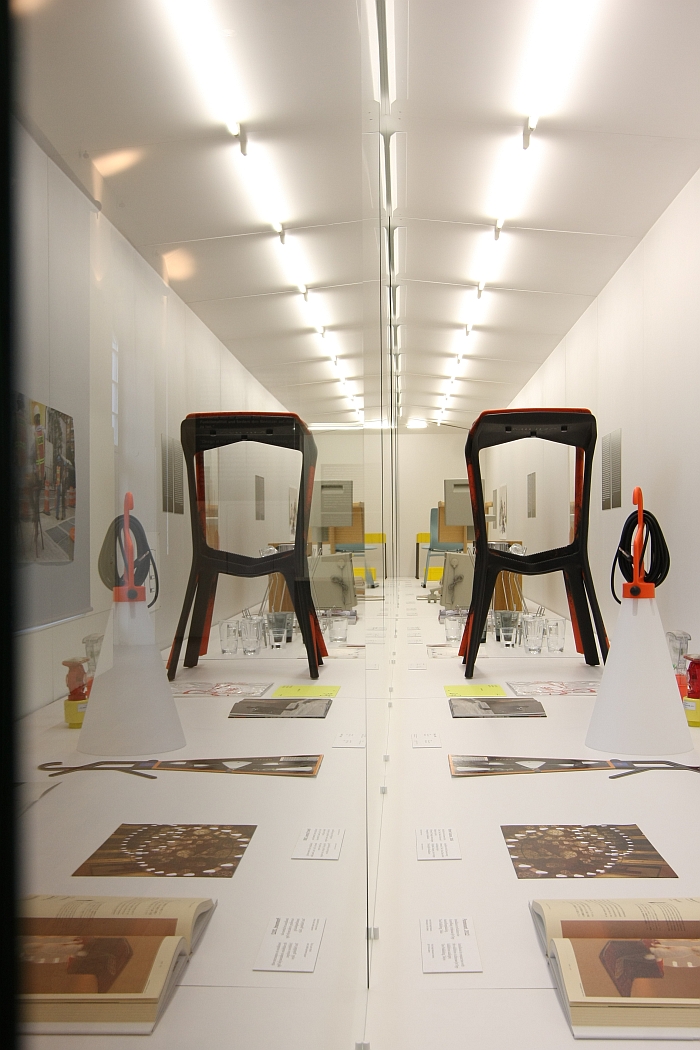
At the opening of Panorama at the Vitra Design Museum Konstantin Grcic explained he didn't want the exhibition to be something static rather something dynamic. In that the content has remained the same, the soundbites and information snippets on the wall are the same and the exhibited objects are, largely, the same as those selected in 2013 and presented in 2014, the exhibition has remained in one sense very "static." Is however at the same time dynamic because the experience, reaction and reception is unique for each and every individual visitor. In addition, while the questions posed are the same, the context in which you search for answers has evolved. And will continue to evolve once you leave you the exhibition. In today's contemporary, multi-medial society it is increasingly important to learn to regularly pose questions, to process the information around you and understand the relevance of apparently irrelevant details. Panorama is an excellent place to sharpen your senses.
As we noted in 2014, viewing Panorama with a hangover is not to be recommended, nor is it to be recommended in the company of young children or others without the interest and/or patience to invest the necessary time and thought. Panorama needs your input to fully work, but viewed with the necessary consideration can be a very rewarding experience.
And for Konstantin Grcic? What has he got from the experience of creating the exhibition? "When we started to fully concentrate on the exhibition it was really exciting to set myself such high targets, to challenge myself and for all to do something that I don't normally do and where I wasn't sure sure if I even can do it. We achieved a lot but also didn't achieve an awful lot and that is a remarkable experience. It was at times very painful to accept that we simply couldn't realise things which we wanted, yet it is still a very valuable, positive experience and we have learned a lot from this exhibition. Even if I'm still not completely satisfied with it, because I know where things could be that aren't!"
Which means we can expect a Panorama 2?
"Possibly" he laughs,"but not for a very long time...."
The Leipzig show is the fourth presentation of Panorama, and ahead of the opening Konstantin Grcic announced himself "nervous", every station being as it is new, different, a leap into the unknown.
He needn't have worried.
In contrast to the robbers from the fairly tale "The Town Musicians of Bremen" currently sitting in their forest lair in the Leipzig Märchenland, who really, really should.
Konstantin Grcic - Panorama runs at the Grassi Museum for Applied Arts, Johannisplatz 5-11, 04103 Leipzig until Sunday May 1st
Full information, including information on the accompanying fringe programme can be found at www.grassimuseum.de


